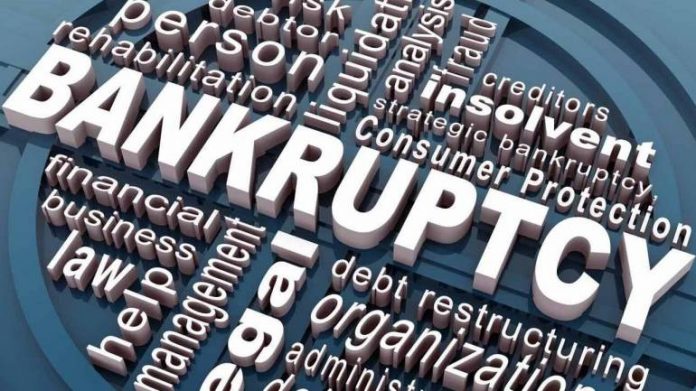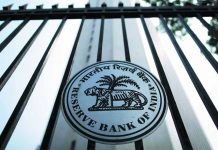This article is written by Gaurav Mitra, He is a practicing advocate in the Courts of Delhi and can be reached at [email protected].
Introduction
The IBC was enacted to consolidate the laws pertaining to the reorganization and insolvency resolution of corporate persons, partnership firms and individuals in a time-bound manner, so as to maximize value assets, promotion of entrepreneurship, availability of credit and balancing the interests of various stakeholders.1 After its enactment, the IBC has been subjected to several amendments as well as clarifications and interpretations of its provisions by the judiciary.
Most recently, the National Company Law Appellate Tribunal (“NCLAT”), interpreted the meaning of financial debt and the time value of money in the case of Shailesh Sangani v. Joel Cardoso and Another2 (hereinafter referred to “Shailesh Sangani”), which has been discussed in this Article.
Financial Debt under the IBC
The Corporate insolvency resolution process (“CIRP”) is initiated by filing an application before the appropriate forum by, either an ‘Operational Creditor’ or a ‘Financial Creditor’ when a corporate debtor commits a default.3 As Shailesh Sangani4 deals with financial debt, it is relevant to understand not only what a ‘financial debt’ is, but also what constitutes a ‘default’ with regard to financial debt.
Section 7 of the IBC states a ‘default’ to be one which “includes a default in respect of a financial debt owed not only to the applicant financial creditor but to any other financial creditor of the corporate debtor.”5 A ‘financial debt’ on the other hand, has been defined as6:
“Financial Debt” means debt along with interest, if any, which is disbursed against the consideration for the time value of money and includes-
- Money borrowed against the payment of interest;
- Any amount raised by acceptance under any acceptance credit facility or its de-materialized equivalent;
- Any amount raised pursuant to any note facility or the issue of bonds, notes, debentures, loan stock or any similar instrument;
- The amount of any liability in respect of any lease or hire purchase contract which is dement as a finance or capital lease under the Indian Accounting Standards or such other accounting standards as may be prescribed;
- Receivables sold or discounted other than any receivables sold on non-recourse basis’;
- Any amount raised under any transaction, including any forward sale or purchase agreement, having the commercial effect of a borrowing;………”
Pertinently, the Hon’ble Supreme Court in Pioneer Urban Land and Infrastructure Limited and Another v. Union of India and Others7, while interpreting the concept of time value of money held that, a transaction does not necessarily need to culminate into money being returned to the lender or interest being paid over the money borrowed. Instead, it would include something that is equivalent to the money that has been loaned. This interpretation must be borne in mind while understanding the NCLAT’s decision in Shailesh Sangani.
NCLAT’s decision
In Shailesh Sangani8 the Appellant was a Promoter/ Shareholder/ Director of Respondent No. 2 i.e. ‘Priority Marketing Private Limited’ (“Corporate Debtor”).9 The Respondent No. 1 i.e. Joel Cardoso who claimed to be a shareholder of the Corporate Debtor filed an application under section 7 of the IBC seeking initiation of CIRP against the Corporate Debtor, on the ground that he had granted unsecured loans to the Corporate Debtor out of which a sum of Rs. 1,45,36,375/- remained due and payable.
The Corporate Debtor stated that this unsecured loan was a part of an overall settlement and it was ready to settle the cross-holding shares and loans inter- se the Respondents i.e. Joel Cardoso and the Corporate Debtor.10 It also stated that none of the loans under the quasi-partnership arrangement inter-se Respondents had any terms for repayment or interest.11
However, the NCLT Mumbai vide its order dated 31.08.2018 opined that the amount was arrived at pursuant to a mutual agreement between the parties and was reflected in the books of the Corporate Debtor under the head ‘long term borrowings’.12 Hence, the amount fell within the purview of ‘financial debt’, notwithstanding the fact no interest was payable.13
Being aggrieved by this order, the Appellant preferred an appeal before the NCLAT wherein, the Appellant contended that the amount claimed was not a ‘financial debt’ despite, admittedly, there being no consideration for the time value of money in the transaction.14 In fact, no interest was claimed by the Respondent No.1 or paid by the Corporate Debtor to Respondent No. 1, no TDS amount was deducted in respect of the payments, no tenure for the repayment of amounts was granted by Respondent No. 1 to the Corporate Debtor, and there was no time value of money in the transaction and no consideration for the time value of the money was agreed between the parties at the time of disbursement of money.15
While dismissing the appeal preferred by the Appellant, the NCLAT on 30.01.2019 held as follows16:
“the debt along with interest, if any, should have been disbursed against the consideration for the time value of money. However, the use of the expression ‘if any’ as suffix to ‘interest’ is clearly indicative of the fact that the component of interest is not a sine qua non from bringing the debt within the fold of ‘financial debt’. Hence, the amount that has been disbursed as debt against the consideration for time value of money may or may not be interest bearing. What is material is that the disbursement of debt should be against consideration for the time value of money. Clauses (a) to (i) of Section 5(8) embody the nature of transactions which are included in the definition of ‘financial debt’. It includes money borrowed against the payment of interest. Clause (f) of Section 5(8) specifically deals with amount raised under any other transaction having the commercial effect of a borrowing which also includes a forward sale or purchase agreement. It is manifestly clear that money advanced by a Promoter, Director or a Shareholder of the Corporate Debtor as a stakeholder to improve financial health of the Company and boost its economic prospects, would have the commercial effect of borrowing on the part of Corporate Debtor notwithstanding the fact that no provision is made for interest thereon. Due to fluctuations in market and the risks to which it is exposed, a Company may at times feel the heat of resource crunch and the stakeholders like Promoter, Director or a Shareholder may, in order to protect their legitimate interests be called upon to respond to the crisis and in order to save the company they may infuse funds without claiming interest. In such situation such funds may be treated as long term borrowings. Once it is so, it cannot be said that the debt has not been disbursed against the consideration for the time value of the money. The interests of such stakeholders cannot be said to be in conflict with the interests of the Company. Enhancement of assets, increase in production and the growth in profits, share value or equity enures to the benefit of such stakeholders and that is the time value of the money constituting the consideration for disbursement of such amount raised as debt with obligation on the part of Company to discharge the same. Viewed thus, it can be said without any amount of contradiction that in such cases the amount taken by the Company is in the nature of a ‘financial debt’”.
Conclusion
A perusal of the definition of ‘financial debt’ would indicate that it is a debt along with interest, if any, which is disbursed against the consideration for the time value of money. As is abundantly clear from the provision itself, the definition is inclusive in nature. However, what is interesting to see is that the NCLAT through this judgment has given it a wider interpretation by stating that even stakeholders/shareholders of a company who have lent it money, without interalia any interest component or deduction of TDS, would still be considered as consideration for the time value of money. The NCLAT by this interpretation therefore, lays emphasis on the fact that receiving dividends, share values, enhancement of assets or profits or equity against the money lent, would also constitute a consideration for the time value of money. It is pertinent to highlight that such an interpretation has not been directly envisaged under the IBC and is hence, a way forward in the evolution of the IBC.
Endnotes
- The Insolvency and Bankruptcy Code, 2016 at Page 1(“Hereinafter referred to as the “IBC”).
- 2019 SCC Online NCLAT 52
- Section 6 of the IBC
- Supra note iii
- Explanation to Section 7 of the IBC
- Section 5 (8) of the IBC
- (2019) 8 SCC 416
- Supra note iii
- Id.
- Id.
- Id.
- Id.
- Id.
- Id.
- Id.
- Id.
Students of Lawsikho courses regularly produce writing assignments and work on practical exercises as a part of their coursework and develop themselves in real-life practical skill.
https://t.me/joinchat/J_0YrBa4IBSHdpuTfQO_sA
Follow us on Instagram and subscribe to our YouTube channel for more amazing legal content.
 Serato DJ Crack 2025Serato DJ PRO Crack
Serato DJ Crack 2025Serato DJ PRO Crack










 Allow notifications
Allow notifications



